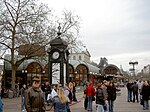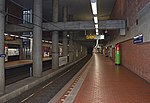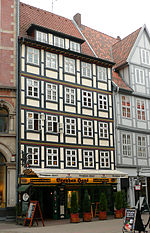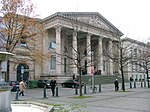Bekleidungshaus Otto Werner
Clothing industryCompanies based in HanoverDefunct department storesDepartment stores of GermanyUse British English from December 2023

The Otto Werner clothing store (Bekleidungshaus Otto Werner) opened in 1932 in Hanover, the capital of Lower Saxony, Germany. By 1985, the store had expanded to several branches throughout the state. After the original store closed in 1999, the enterprise ceased operating in 2001.
Excerpt from the Wikipedia article Bekleidungshaus Otto Werner (License: CC BY-SA 3.0, Authors, Images).Bekleidungshaus Otto Werner
Osterstraße, Hanover Centre (Centre)
Geographical coordinates (GPS) Address Nearby Places Show on map
Geographical coordinates (GPS)
| Latitude | Longitude |
|---|---|
| N 52.373092 ° | E 9.737156 ° |
Address
Zara
Osterstraße
30159 Hanover, Centre (Centre)
Lower Saxony, Germany
Open on Google Maps









